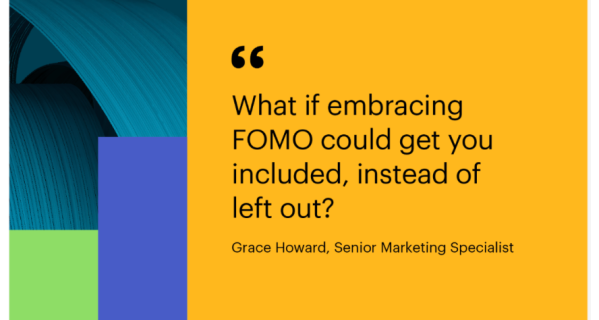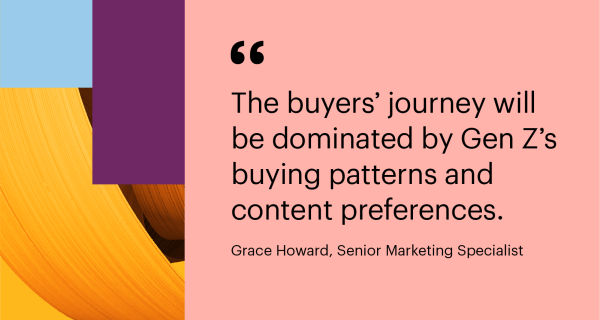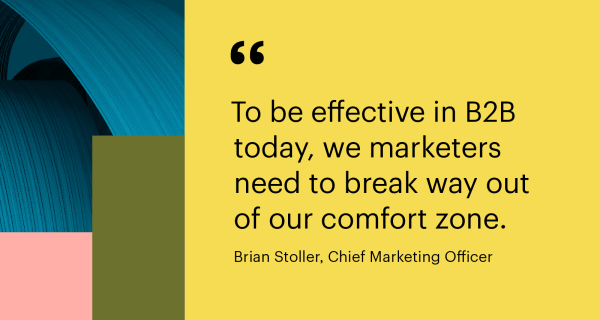Making the case for a new expensive strategy, platform, or software can be a challenge. Especially if that is account-based marketing. ABM requires buy in from multiple decision makers across various departments.
So, to really make the case, you’ll need solid stats and research to back you up.
We’re here to make things a bit easier and save you some research. We’ve compiled 30 of the top stats on why ABM could be the solution your marketing and sales teams are looking for. Here are 30 galvanizing account-based marketing and intent data statistics to share with your team, decision makers, or anyone involved in adoption across departments.
But first, let’s talk basics.
What is account-based marketing?
Account-Based Marketing is a B2B marketing strategy in which sales and marketing teams work closely together to target, reach, and close deals with high-fit accounts.
What is intent data?
According to Foundry, “intent data is information that captures a person’s digital behavior and provides insight into their interests, needs, and purchase intentions. It can include data such as website visits, search terms, content downloads, social media activity, and more. The goal of intent data is to provide marketers and sales teams with a more complete understanding of a potential customer’s behavior and preferences, allowing them to deliver more targeted and personalized communications.”
Why are ABM and intent data powerful together?
ABM and intent data are often used together as a powerful tool for B2B marketers. Here are a few reasons why ABM and intent data work so well together:
- Enhanced targeting
- Personalization
- Sales and marketing alignment
Show me the numbers!
Account-based marketing stats
ABM is not a buzzword anymore.
- The value of ABM is widely recognized across the B2B SaaS industry. 94% of marketers rate ABM as extremely or very important to their business objectives. (Foundry)
- 91% of businesses running programs for at least six months. (Foundry)
- 45% of marketers are in the early stages and testing their ABM program. (Demand Gen Report)
- ABM continues to be a top B2B priority with substantial commitment and investment. 28% of the 2022 marketing budget was dedicated to ABM and 71% of companies will increase ABM spend in 2023. (ISTMA)
- 67% of brands leverage account-based marketing. (HubSpot)
- Traditional marketing efforts are not working anymore. 61% of marketers identify high-quality lead generation as their biggest challenge. (Demand Sage)
ABM results and ROI
It’s frustrating when you invest in a new software or strategy and the results and ROI just aren’t there. Luckily the majority of ABM marketers have seen favorable results:
- 76% of B2B marketers who used ABM in 2020 reported an increased ROI compared to other forms of marketing. (ABMLA)
- 87% of B2B marketers said that the ROI of ABM initiatives outperforms other marketing investments (Foundry)
- ABM programs had a 20% lift in average deal size compared to traditional demand generation programs. (Gartner)
- 84% of marketers feel their ABM efforts have been very/ extremely successful over the past 12 months. (Foundry)
- The most common metric marketers use to track ABM is revenue won. (HubSpot)
Align marketing strategies and tactics with sales
ABM works to align marketing and sales teams:
- Marketing aligns marketing and sales teams on a common strategy. 70% of marketers say their alignment is strong with their sales team. (Foundry)
- Additionally, 66% say ABM is significantly improving marketing and sales alignment. (ISTMA)
- ABM contributes to more upsells and renewals. 80% of marketers say ABM improves customer lifecycle value. (Demand Gen Report)
- Aligned teams close more and churn less. Businesses with strong sales and marketing alignment are 67% more effective at closing deals and 58% better at retaining customers. (LinkedIn)
- Teams with great sales-marketing alignment close up to 38% more deals. (HubSpot)
Personalization statistics
ABM and personalization go hand-in-hand!
- 80% of consumers are more likely to buy when brands offer personalized experiences. (Epsilon)
- 56% of marketers recommend using personalized content to achieve ABM success. (Forrester)
- The most common challenge with ABM is delivering a personalized experience. (HubSpot)
- 93% of companies experience a lift in conversion rates from personalization. (Econsultancy)
Account targeting statistics
ABM is all about account targeting and having a strongly defined ICP.
- 57% of professionals say their companies target 1,000 accounts or under with ABM. (Forrester)
- Organizations with a strong Ideal Customer Profile (ICP) — which is similar to a buyer persona — achieve 68% higher account win rates. (Engagio)
- “Researching Accounts” and “Identifying Target Contacts” are the top two tactics used by marketers within an ABM model. (HubSpot)
Intent data statistics
Intent data allows marketers to capture important insights into the buying patterns of their prospects. Here’s a few stats on intent data’s effectiveness:
- Compared to the control group campaigns, intent-based ads were 2.5x more efficient. (Foundry)
- Compared to the control group campaigns, intent-based ads had a 220% higher click-through rate. (Foundry)
- 95% of marketers use more than one intent data source. (Foundry)
- Almost 70% of marketers plan on increasing spend on intent data next year (Insights for Professionals)
Importance of ABM + intent
ABM combined with intent data is a fantastic tool for businesses to run highly targeted campaigns to their most important accounts. Here’s a few stats on the benefits of combining the two:
- The importance of engaging target accounts early in the buying journey is increasing. 87% of buyers want to self-serve part, or all of their buying journey. (TrustRadius)
- Competitive intent signals peaked approximately 80% of the way through the buying cycle. (Foundry)
- Intent data works best with a process or ABM platform in place. 71% of B2B organizations are collecting buyer signals, but more than half of those organizations are not operationalizing the data. (Gartner)
ABM results
Since real results are just as compelling as these 19 stats, we thought we’d throw in a few ABM success stories.
- SugarCRM saw $9.9M in influenced pipeline by implementing an ABM and intent data strategy.
- Clearwave shortened their sales cycle length by 20% with intent-based personalization.
- Treasure Data engaged 100% of target accounts by scaling their pilot ABM program.
- Dynatrace met internal growth demands and incurred more than 3,000% ROI during a pandemic year by utilizing intent signals.
TL;DR: Combine intent data and ABM for a powerful B2B marketing and sales solution that allows you to run highly targeted and successful campaigns. Learn more about the power of ABM and intent data in our latest ABM and Intent Data Benchmarking Study.






